Want to disable ‘End Process’ in the browser Task Manager on Microsoft Edge?
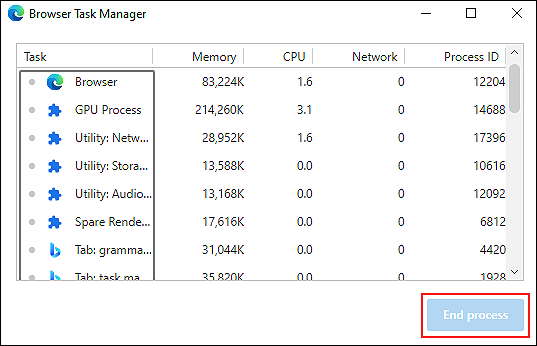
With all the latest and useful features it possesses, Microsoft Edge is among the best browsers available in the market.
Microsoft Edge comes with its own Task Manager, which works just like the Windows Task Manager and lets you manage extensions for the browser. Also, this Task Manager is fully customizable, which can be beneficial if your computer is used by multiple users.
One such customizable feature is ‘End Process’, which allows the users to disable extensions and other services provided by the Edge browser.
If you want to disable this feature, you are in the right place because this guide is going to walk you through all the steps in detail.
Let’s get started.
1. Use the Group Policy Editor.
The Group Policy feature provides advanced users with the ability to make changes to their operating system, based on their preferences.
Information in the Group Policy Editor is stored in the form of policies, and by modifying these policies, we can control the working environment of Windows better. In this method, we will be modifying Microsoft Edge’s policies to make the desired changes.
Here is what you need to do:
- Visit Microsoft’s official website.
- Scroll down the window and select the version details of your Microsoft Edge.
Note: To check the version details of Microsoft Edge, launch the browser and click on the More button (three dots) at the top-right corner of the window. Go to Settings and select About Microsoft Edge.
- Click the GET POLICY FILES button to download the policy files.
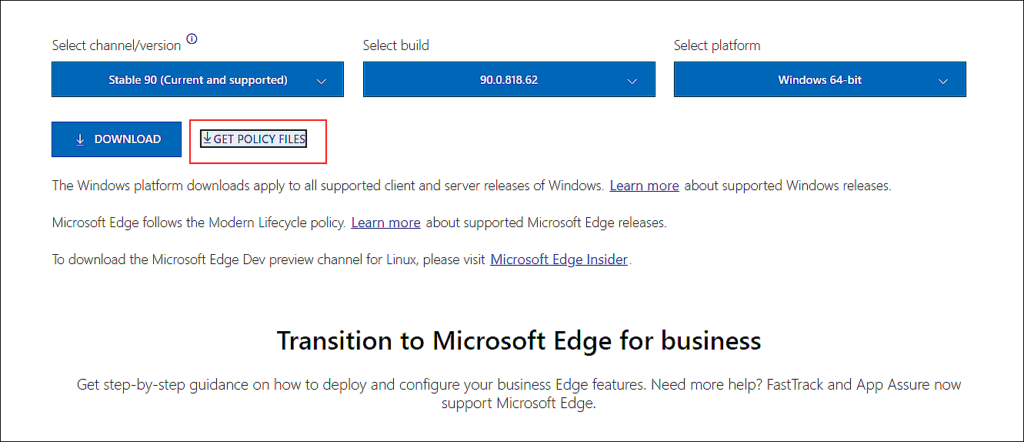
- Once the download is complete, extract the downloaded file and then open the folder.
- In the folder, navigate to the location mentioned below.
MicrosoftEdgePolicyTemplates\windows\admx
- Locate and copy the msedge.admx and msedge.adml files and paste them in the C:\Windows\PolicyDefinitions folder. You will find the msedge.admx file right after opening the extracted file but for the msedge.adml file, check the en-US folder.
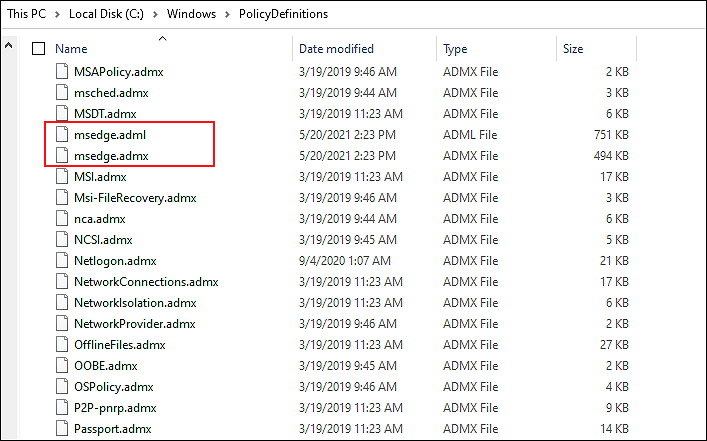
- Once you have pasted the files, restart your PC.
- Upon reboot, open a Run dialogue box by pressing Windows + R keys on your keyboard simultaneously.
- Inside the text field of the dialogue box, type ‘gpedit.msc‘ and hit Enter. Doing so will launch the Group Policy Editor on your PC.
- In the Group Policy Editor window, navigate to the location mentioned below.
Computer Configuration\ Administrative Templates\ Microsoft Edge\
- Locate Enable ending processes in the Browser task manager in the right pane and double-click on it.
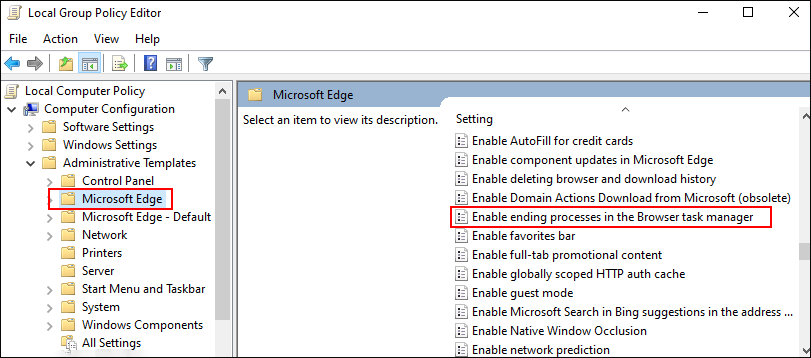
- Now select Disabled and click on Apply/OK to save the changes.
Doing so will disable the ‘End Process’ feature of the Microsoft Edge Task Manager successfully.
2. Try Using CleanMyPC.
If the solutions in this guide are not working for you, there’s a good chance that your PC is infected with a virus or malicious software. If this is the case, we recommend removing the junk files first and then following the instructions we provided.
It is possible to declutter your PC both manually and with cleaning software, but we urge you to utilize a PC cleaner to save yourself time. We recently tested the top online PC cleaners and found that CleanMyPC was the best.

Besides cleaning out junk files, it can also improve your system’s overall functionality, thanks to the wide range of system maintenance tools it comes with. We noticed a significant improvement in our system’s speed after running a scan using this tool, which is why we highly recommend giving it a shot.
All you need to do is run a scan using CleanMyPC, and the rest will be taken care of!
3. Use the Registry Editor.
Another easy way of disabling ‘End Process’ in the Browser Task Manager is by modifying Windows Registry.
Advanced users can manage their operating systems with Windows Registry just as they do with Group Policy Editor. However, since this method is complex, we suggest you follow the steps very carefully, as even the slightest mistake can result in serious issues within your operating system.
Here is what you need to do:
- Open a Run dialogue box by pressing Windows + R keys simultaneously.
- Type ‘regedit‘ in the text field of the dialogue box and hit Enter. Doing so will launch Windows Registry on your PC.
- Inside the Registry Editor, navigate to the location mentioned below.
HKEY_LOCAL_MACHINE\SOFTWARE\Policies\Microsoft\Edge
- If you cannot locate the Edge key, right-click on the Microsoft key and select the New > Key option.
- Name this newly created key as Edge.
- Now double-click on the Edge key and right-click anywhere in the right pane.
- Select the New > DWORD (32-bit) Value option and name this value as TaskManagerEndProcessEnabled.
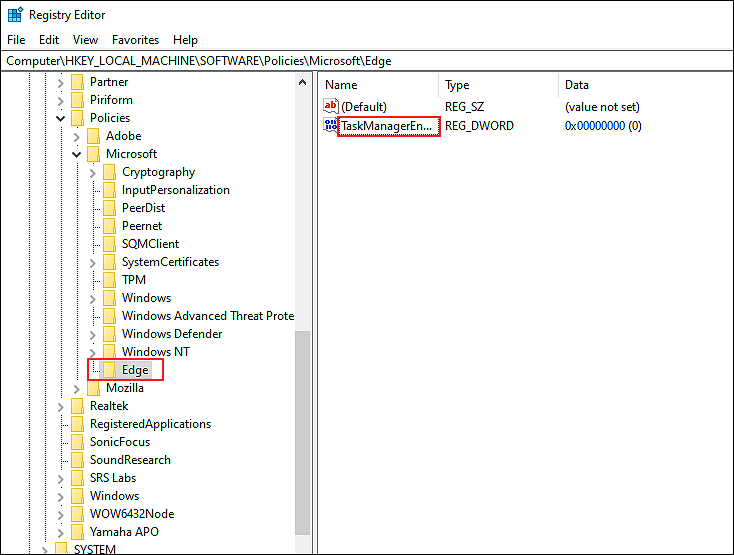
- Double-click on TaskManagerEndProcessEnabled and under Value data, type 0.
That’s it!
The feature can always be re-enabled by following the steps outlined above and typing 1 under Value data.
This brings us to the end of our guide on ways to disable ‘End Process’ in the browser Task Manager on Microsoft Edge. We hope that one of the troubleshooting methods did the trick for you and the issue is resolved by now. If you still have any questions, please let us know in the comment section below. We will try our best to assist you!
If this guide helped you, please share it. 🙂





